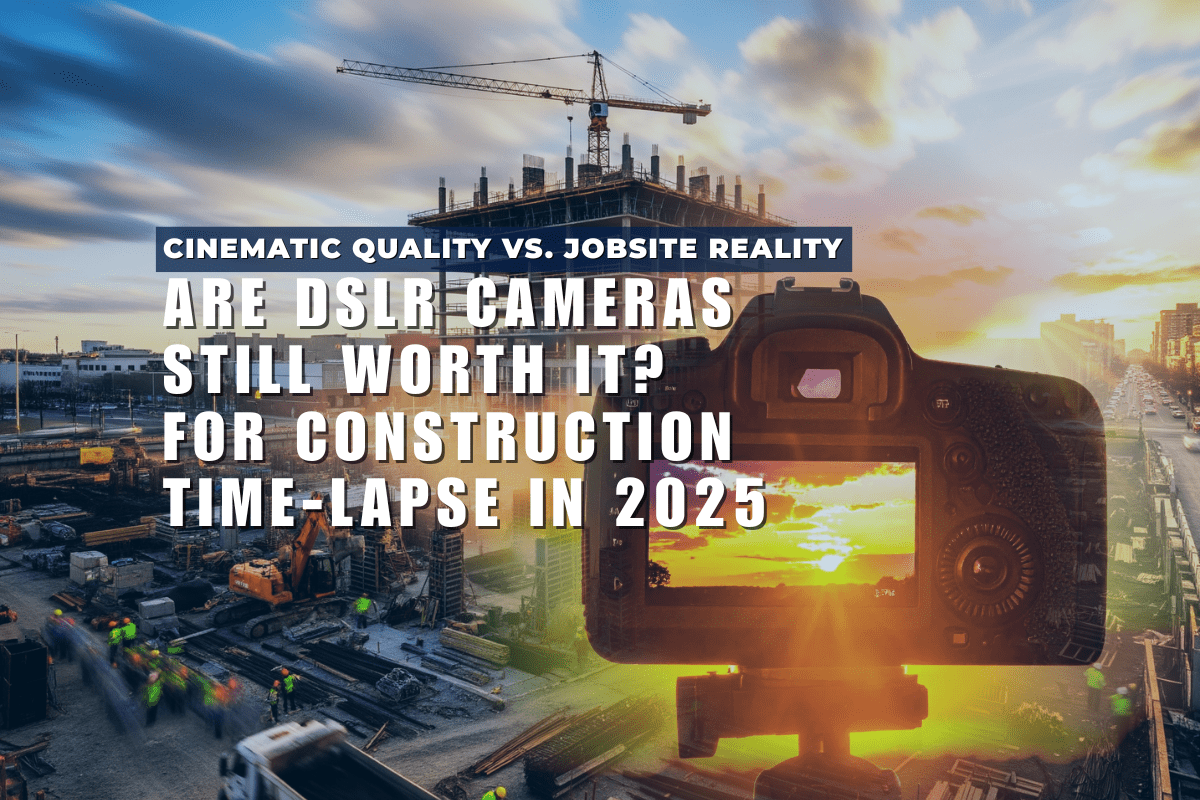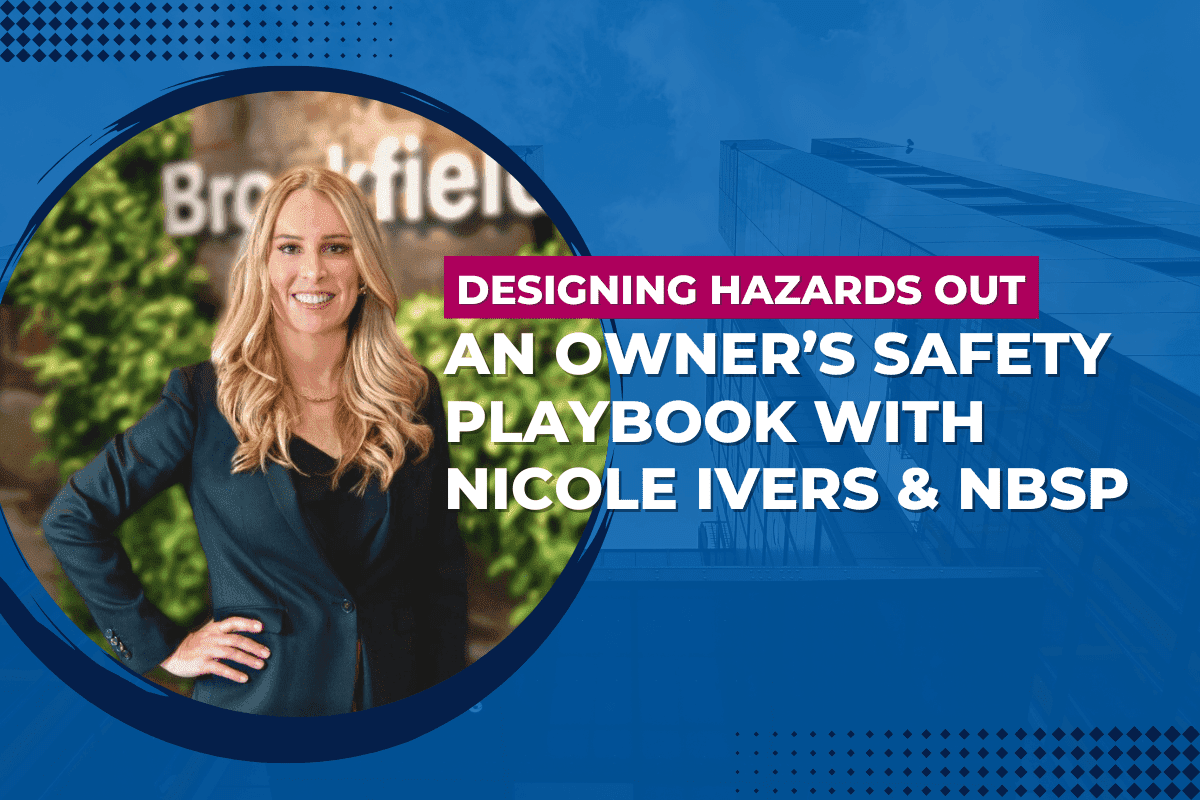This blog is an updated version of the blog,"How To Use TimeLapse Calculator," posted in 2020.
Construction site management is a multifaceted role that includes coordinating diverse teams, adhering to tight schedules, managing costs, ensuring safety compliance, and navigating unpredictable site conditions. Effective management requires addressing these complexities with skill and strategic planning. Carefully planning and implementing time-lapse cameras on site can help streamline many complex processes that need managing.
Key Benefits of Time-Lapse Cameras
1. Progress Tracking and Meeting Deadlines
Time-lapse cameras offer a unique perspective by capturing images regularly over an extended period. This visual documentation allows you to monitor the progress of your team’s work. Here’s how it benefits you:
- Visual Accountability: With time-lapse footage, you can review the entire construction process, identifying milestones, bottlenecks, and areas of improvement.
- Meeting Deliverables: By closely tracking progress, you can ensure that project milestones align with the established deadlines. If any delays occur, you’ll have a clear record to analyze and address them promptly.
2. Enhanced Site Security and Safety Compliance
Construction sites are bustling hubs of activity, and safety is paramount. Time-lapse cameras contribute to site security and safety in the following ways:
- Comprehensive Surveillance: A time-lapse camera provides continuous surveillance, capturing unauthorized access, incidents, or safety violations.
- Evidence Collection: In case of accidents or security breaches, the recorded footage is valuable evidence during investigations.
3. Building a Comprehensive Project Record
Your company’s records are crucial in future projects, legal matters, and client communication. Time-lapse cameras contribute to robust documentation:
- Visual Documentation: Instead of relying solely on written reports, time-lapse videos vividly represent the project’s evolution.
- Stakeholder Updates: Regularly sharing time-lapse updates with stakeholders—whether clients, investors, or regulatory bodies—enhances transparency and builds trust.
Planning for Successful Deployment
While the benefits of time-lapse cameras are evident, successful implementation requires careful planning. Here are essential considerations:
- Purpose of Your Shoot: Define the specific objectives of your time-lapse project. Is it for progress tracking, marketing, or documentation?
- Variables to Account For:
- Power Source: Ensure a reliable power supply for uninterrupted camera operation.
- Shoot Duration: Determine how long the camera will be active. Longer projects may require additional power sources or battery changes.
- SD Card Size: Choose an SD card with sufficient storage capacity to accommodate the entire project duration.
- Desired Video Length: Consider the final video’s intended length. Adjust the capture interval accordingly.
- The Role of a Time-Lapse Calculator:
- A time-lapse calculator simplifies the planning process. It provides precise settings based on your project parameters.
- Use the CamDo time-lapse calculator to calculate capture intervals, storage requirements, and shooting schedules.

Fig 1: Cam-do’s time-lapse calculator tool shows the optimal settings for different project types and lengths.
Understanding Clip Length in Time-Lapse Photography
As a construction site manager venturing into the world of time-lapse photography, you’ll find that determining the final video clip length involves several critical metrics. Let’s explore these factors and how they impact your time-lapse project.
1. Duration of the ShootThe overall duration of your time-lapse shoot significantly influences the final clip length. Consider the entire construction process—from groundbreaking to project completion. Longer projects may span weeks, months, or even years. Remember the key milestones and phases you want to capture as you plan.
2. Daily Shooting HoursHow many hours per day will your time-lapse camera be active? Some projects require continuous monitoring, while others focus on specific work hours (e.g., daytime only). Adjust your shooting schedule accordingly.
3. Time Interval Between ShotsThe time interval between consecutive shots or video clips plays a crucial role. A shorter interval provides smoother motion in the final video but results in more frames. Conversely, longer intervals reduce the number of frames but may miss subtle changes. Striking the right balance is essential.
Memory and Power Considerations
SD Card Requirements
Calculate the memory requirements once you’ve determined the number of frames or images for your shoot. Here’s how:
- Frame Count: Multiply the number of days in your shoot by the number of shots per day. This gives you the total frame count.
- Scene Complexity: Consider the scene’s complexity. High-detail scenes (e.g., bustling construction sites) may generate larger files.
- Compression Parameters: Different cameras use varying compression levels. Test shots will help you estimate the average file size.
Recommended SD Card Size
Based on the above factors, choose an SD card with sufficient capacity. While an average GoPro photo might be around 5 MB, your requirements may vary. It’s prudent to err on the side of caution and opt for a slightly larger card.
Regular Backups and Card Maintenance
Regardless of the SD card size, follow best practices:
- Back-Up: Regularly back up your captured images to prevent data loss.
- Clear the Card: Clear the SD card periodically to ensure smooth operation. Think of it as routine maintenance for your time-lapse setup.

Fig 2: Time-lapse calculator showing SD-card size requirements based on the length of the project and # of shots per day.
The Role of CloudX Pro
Managing your time-lapse project remotely becomes seamless with CloudX Pro. This powerful tool allows you to handle backups, monitor progress, and ensure that your images are securely stored—all without being physically present at the site.
Understanding Power Requirements for Time-Lapse Projects
As a construction site manager embarking on time-lapse photography, understanding your power needs is paramount—especially for long-term projects. Beyond relying solely on a camera’s internal batteries, strategic planning ensures uninterrupted operation. Let’s explore the key considerations and how to address them effectively.
1. Camera Type and ModeBegin by assessing your camera’s specifications. Consider the following:
- Camera Type: Different cameras have varying power demands. Each requires a specific power supply, whether you’re using a DSLR, mirrorless, or action camera.
- Operating Mode: Understand the camera’s power consumption during various modes (e.g., shooting, standby, or video recording).
Your camera’s internal battery serves as the primary power source. However, relying solely on it may lead to interruptions for extended projects. Here’s where backup solutions come into play:
- External Batteries: Invest in high-capacity external batteries or power banks. These provide additional runtime and minimize downtime.
- Scheduled Charging: Use a time-lapse calculator to determine optimal start and stop times for shooting sessions. Sync these with battery charging cycles.
If your project involves cloud-based image storage, factor in the following:
- Image Upload Frequency: Calculate how often you’ll upload images to the cloud. Frequent uploads impact power usage.
- Data Transfer: Uploading images consumes energy. Ensure your camera’s power supply accounts for this additional load.
For sites relying on solar energy, precise planning is essential. Here’s how to assess your solar power needs:
- Location and Sun Exposure: Determine your site’s location and the direction your solar panel faces. Consider any shading during the day.
- Solar Energy Calculation: Our calculator estimates the available solar energy based on these factors. It helps you choose an appropriately sized solar panel to sustain camera operation.

Fig 3: Time-lapse calculator showing the system's power usage to ensure battery and solar are sufficient.
The Role of a Time-Lapse Calculator
Our time-lapse calculator goes beyond basic metrics. It not only helps you meet your project requirements but also recommends essential accessories:
- Battery Capacity: It suggests suitable external batteries based on shoot duration and camera type.
- SD Card Size: Estimate storage needs and choose an SD card accordingly.
- Backup Strategies: Plan regular backups and card maintenance to prevent data loss.
Check out our time-lapse calculator here.
Partnering with CamDoCollaborate with industry experts to simplify your composition and planning. At CamDo, we offer our time-lapse calculator and a comprehensive range of construction time-lapse photography resources, equipment, and software.
Reach out to us today for expert guidance and support. Let’s capture your project’s evolution one frame at a time!



